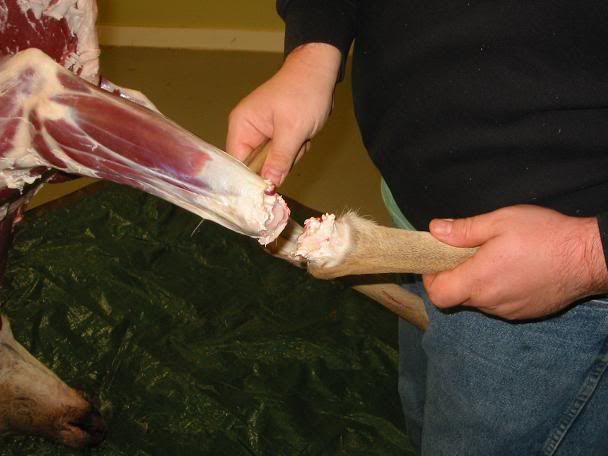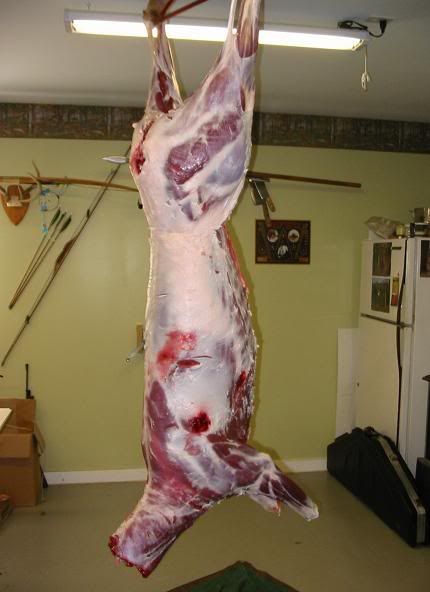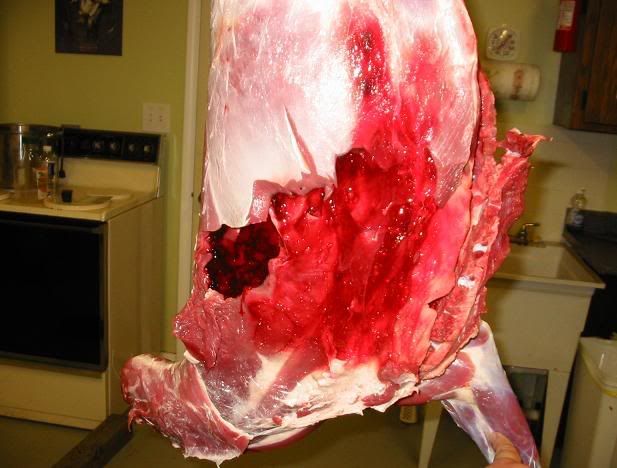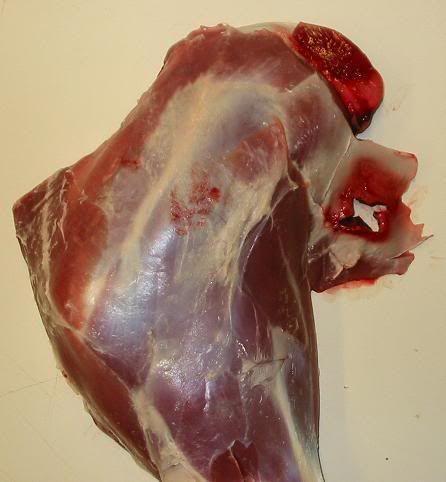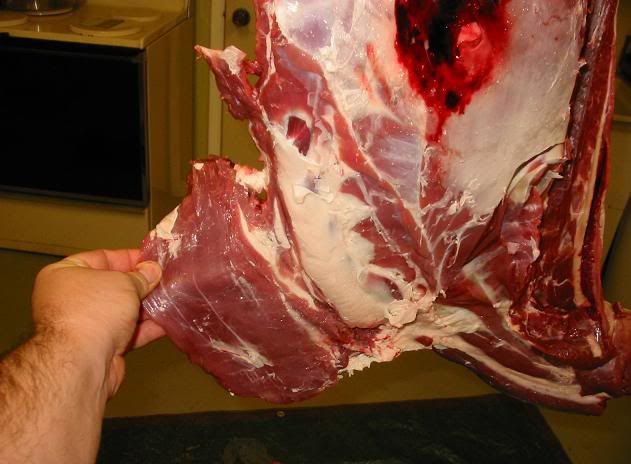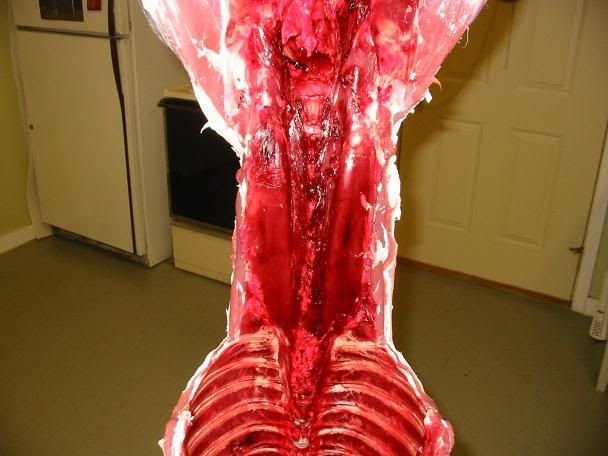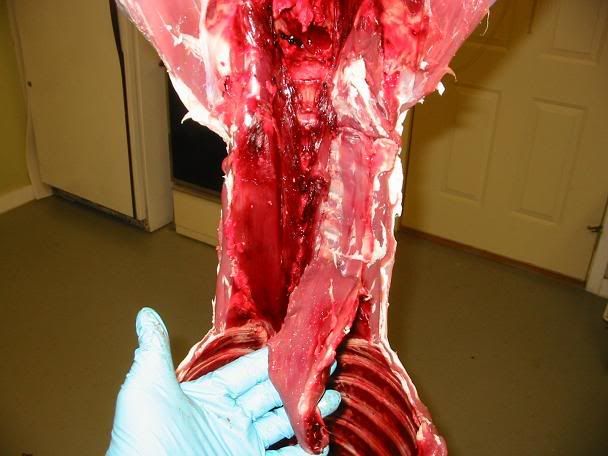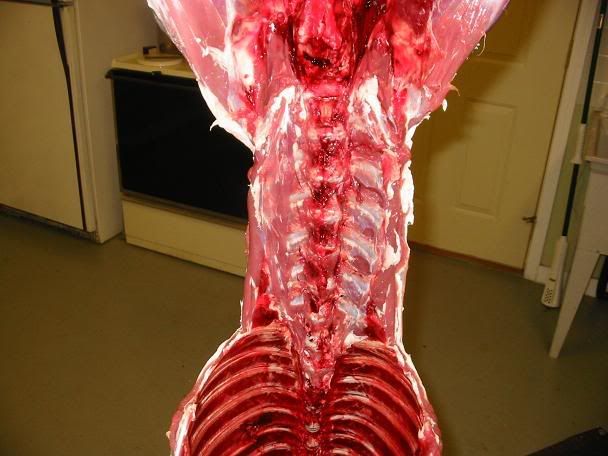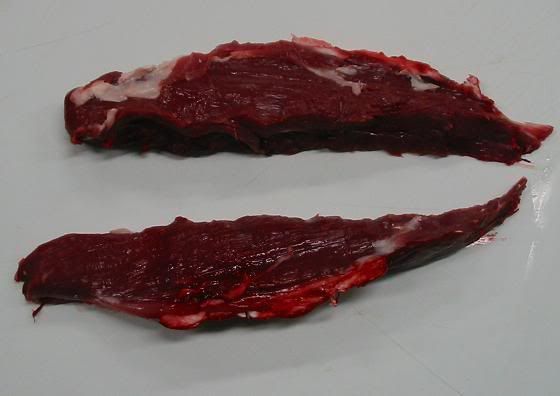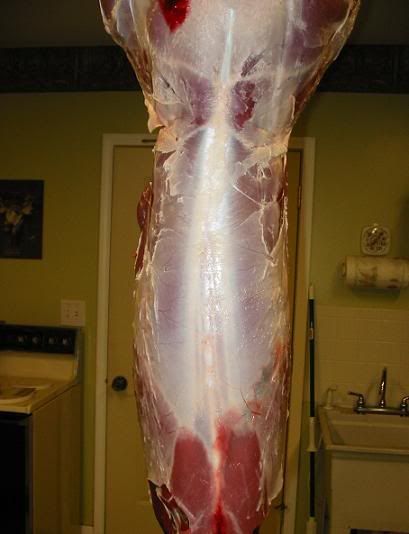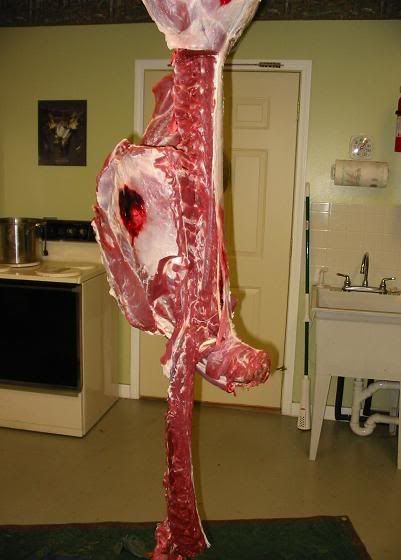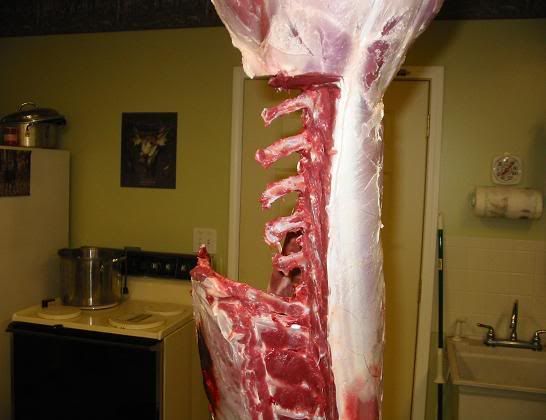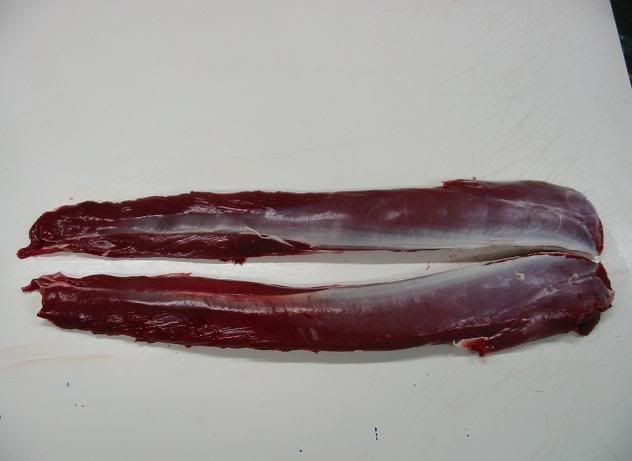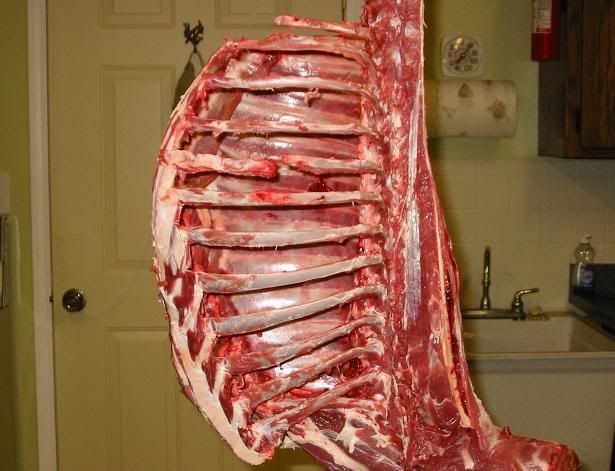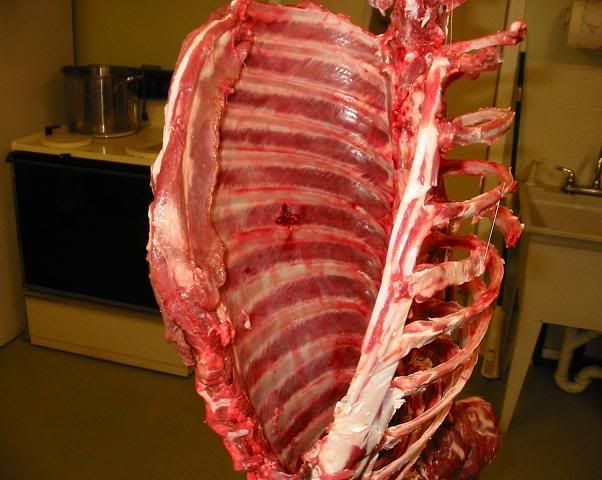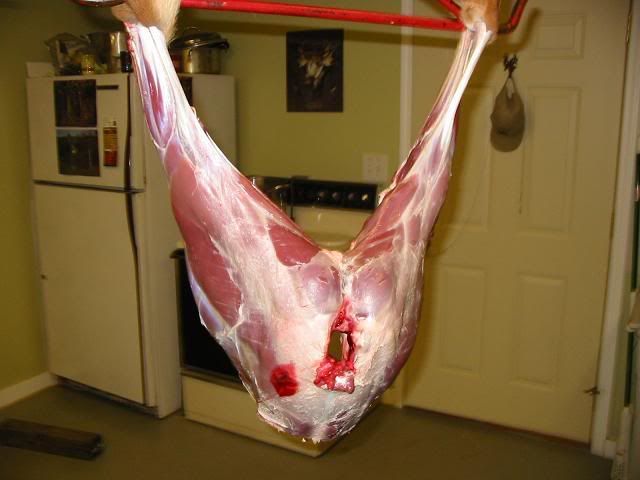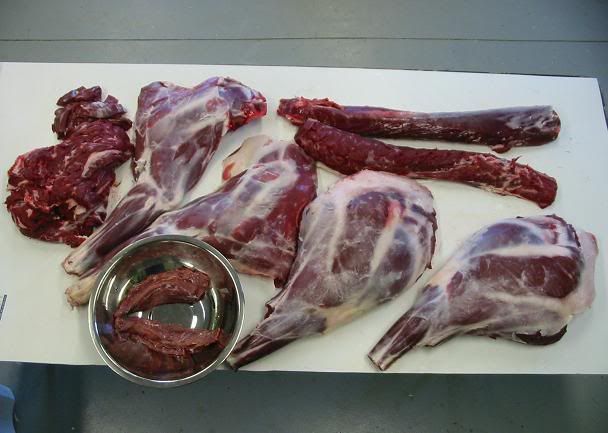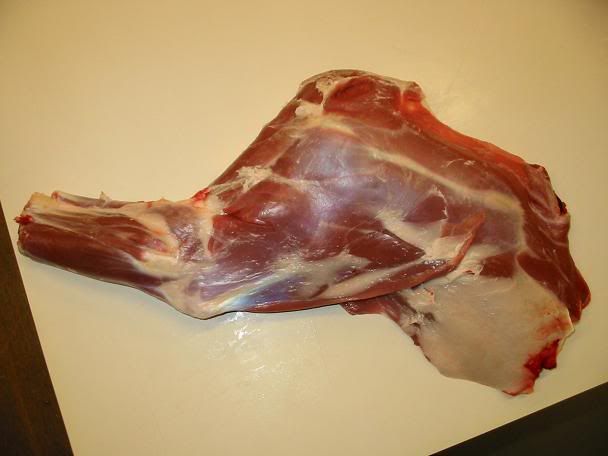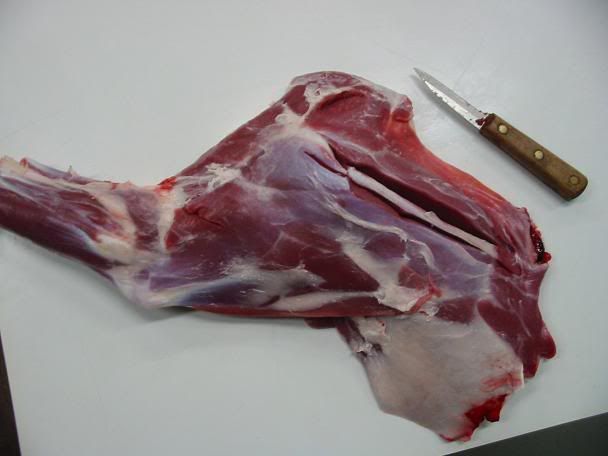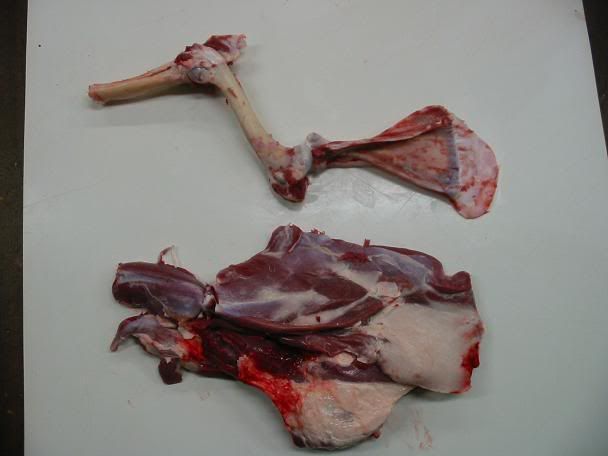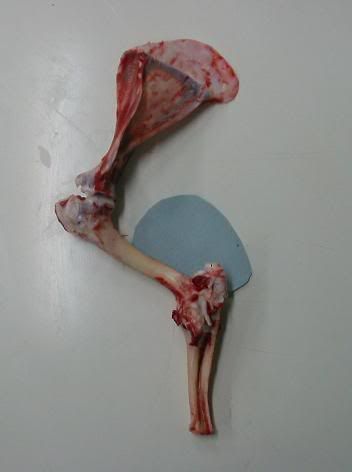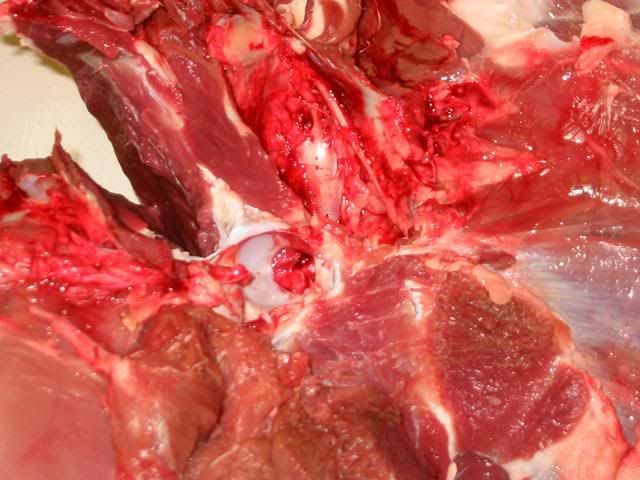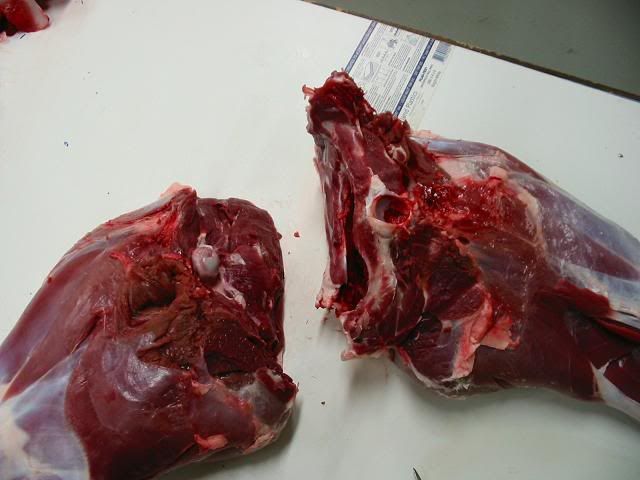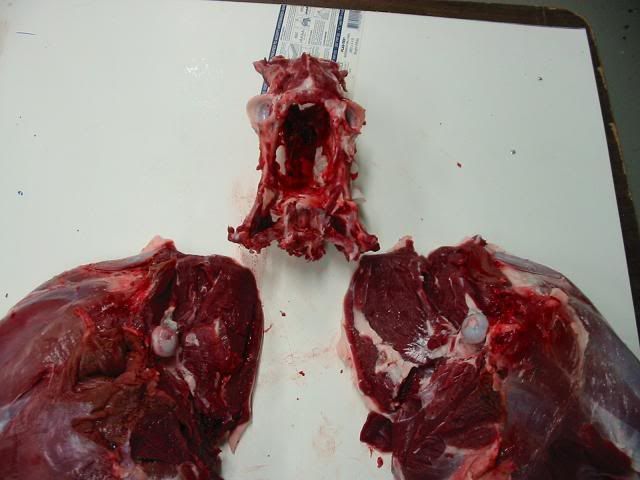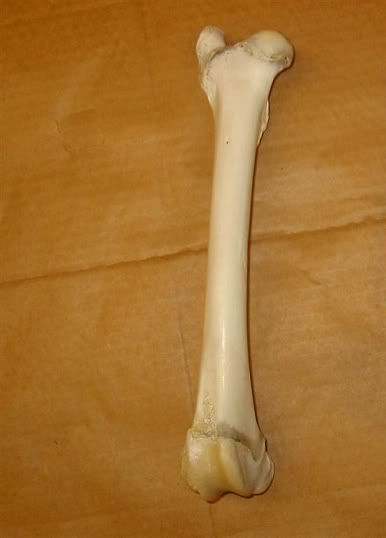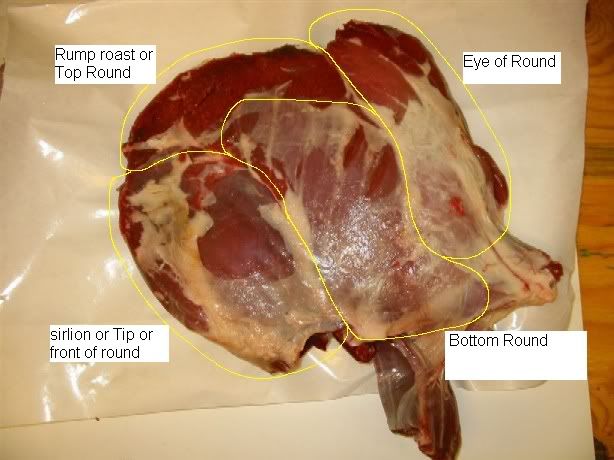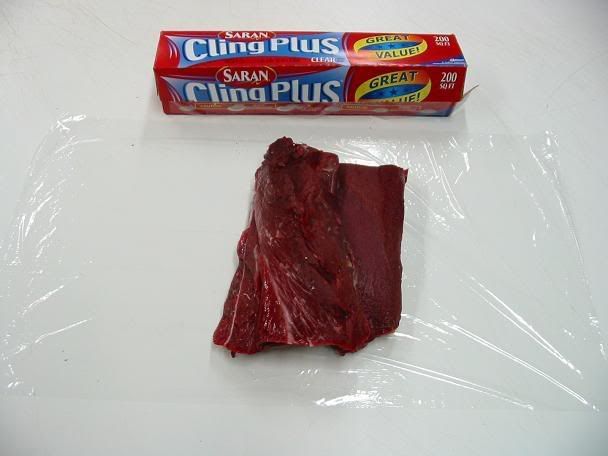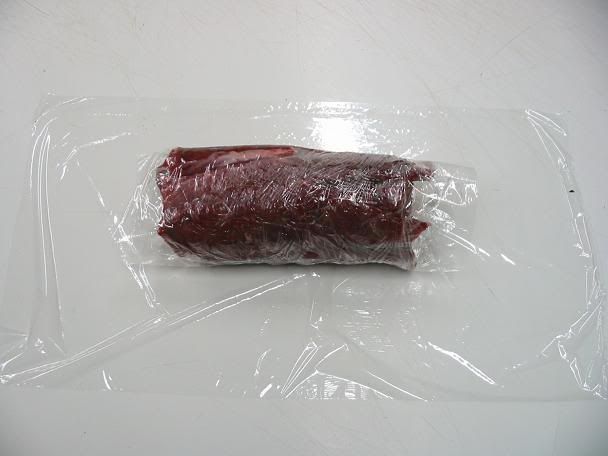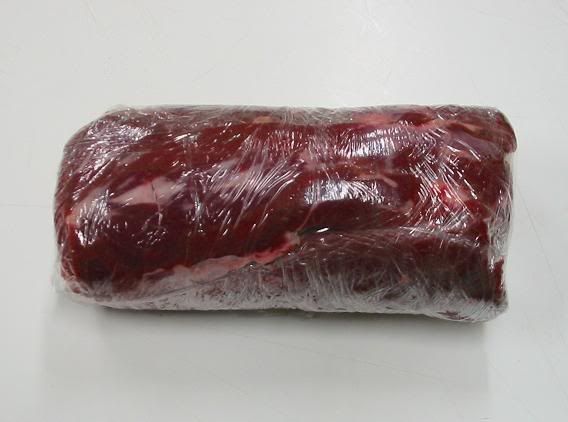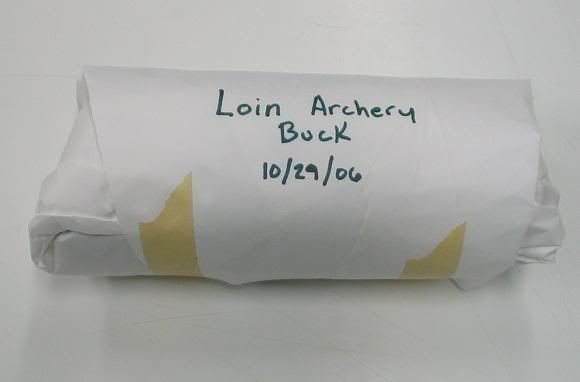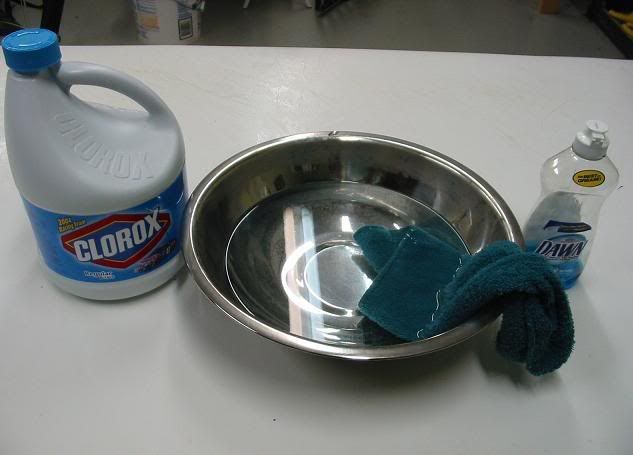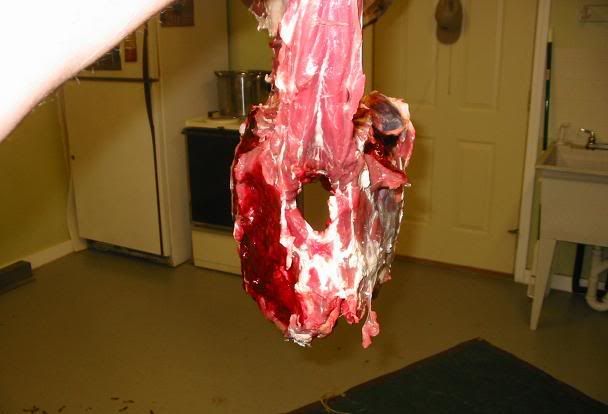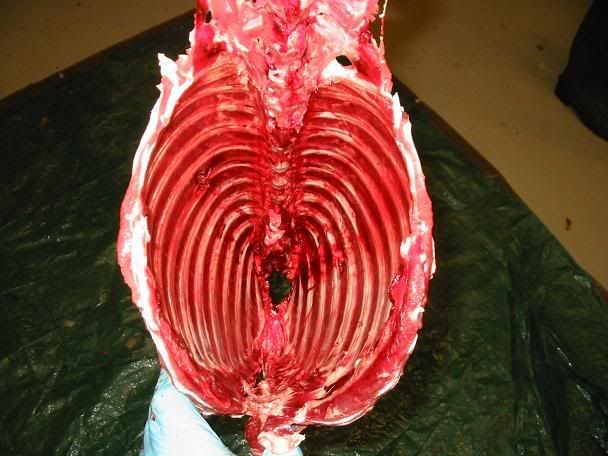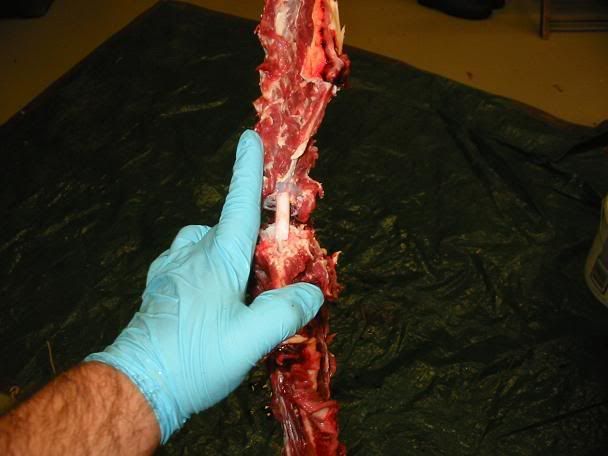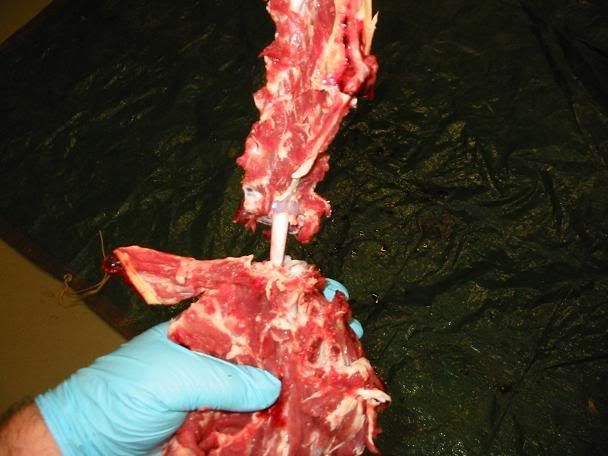- Banned
- #1
Sharp Things
Lil-Rokslider
Step 1. Harvest a nice fat deer with your bow.
Step 2. Gut it out and hang it. I like to hang them from the hind legs because I find they skin easier for me. How long you hang it depends on how warm it is where you live.
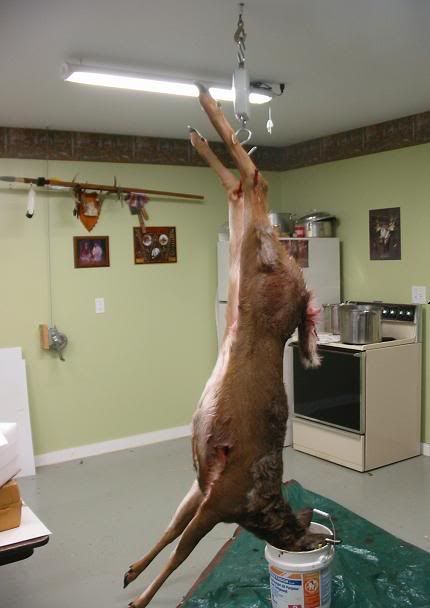
Step 3. Tell your Son you want to do a pictorial on deer processing and that he "Gets" to process a deer so you can take the pictures. Tell him to cut the hide around the hind legs and start to peel downward.
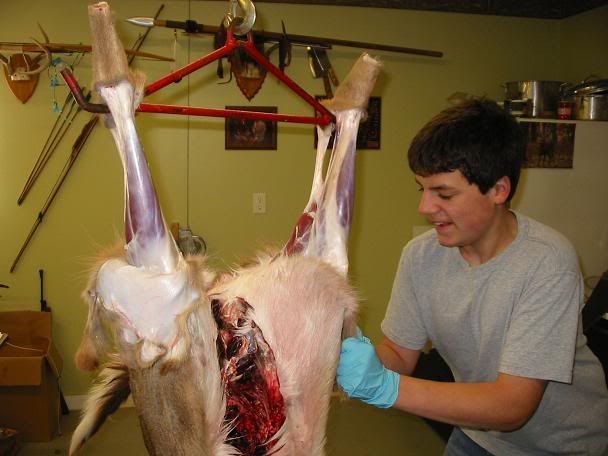
Step 4. Tell him to do more pulling than using the knife so that he doesn't cut the hide because later, you want to teach him how to stretch that hide on a frame and make rawhide
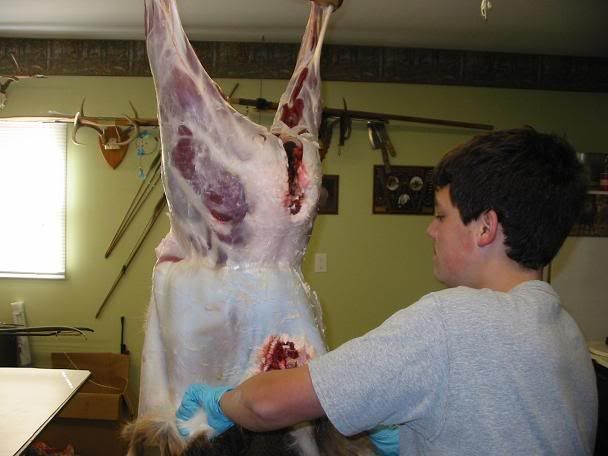
Step 5. Tell him that if he must use the knife, to pull on the hide and only cut the stretchy membrane that joins the hide to the meat.
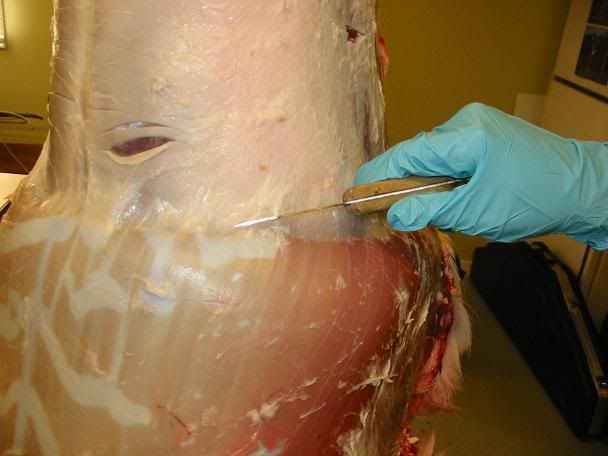
Step 6. Before he gets to far along and covers the front legs with the hide he has peeled off the deer, tell him to cut the hide around the front leg joints and to split the hide upwards, towards the brisket.

step 7. Once finished with the front legs, tell him to continue pulling down on the hide while he skins out the neck. When he starts to whine about how hard it is to skin the neck, tell him that the next deer will be easier.
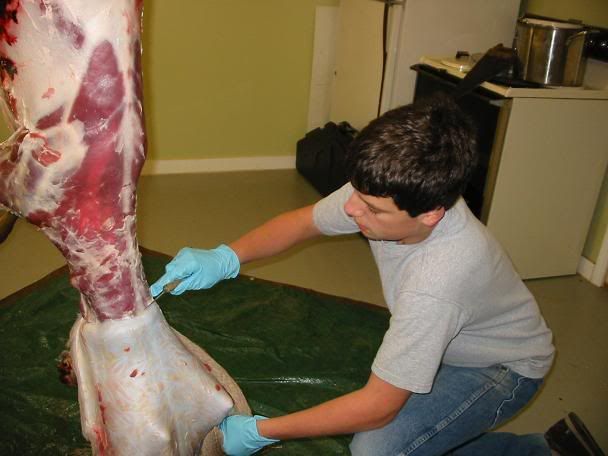
Step 8. Tell him to skin the deer up to the back of the head so as not to waste any of the good neck meat. When he has gone far enough, tell him to cut the neck all the way around until he hits bone.
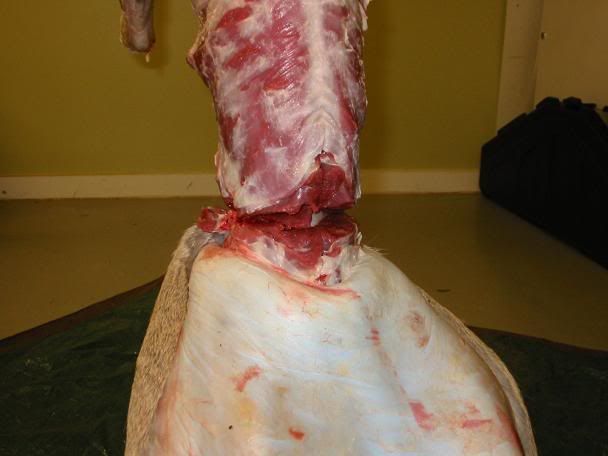
Step 8. When he asks where the saw is, tell him that he can simply cut between the neck bones to separate the head from the carcass. Remind him that he is getting all sorts of lessons in deer anatomy that will make him a better hunter
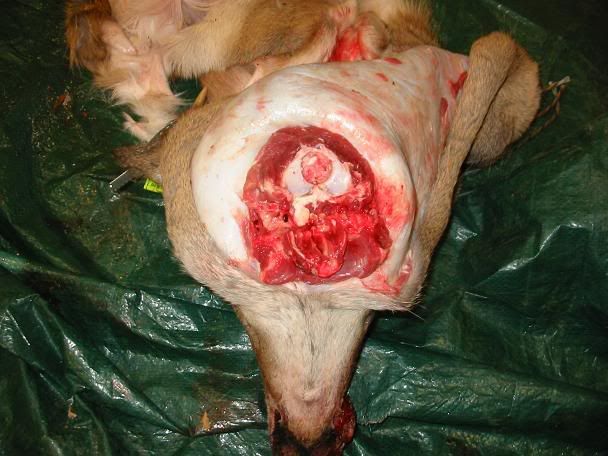
Step 2. Gut it out and hang it. I like to hang them from the hind legs because I find they skin easier for me. How long you hang it depends on how warm it is where you live.

Step 3. Tell your Son you want to do a pictorial on deer processing and that he "Gets" to process a deer so you can take the pictures. Tell him to cut the hide around the hind legs and start to peel downward.

Step 4. Tell him to do more pulling than using the knife so that he doesn't cut the hide because later, you want to teach him how to stretch that hide on a frame and make rawhide

Step 5. Tell him that if he must use the knife, to pull on the hide and only cut the stretchy membrane that joins the hide to the meat.

Step 6. Before he gets to far along and covers the front legs with the hide he has peeled off the deer, tell him to cut the hide around the front leg joints and to split the hide upwards, towards the brisket.

step 7. Once finished with the front legs, tell him to continue pulling down on the hide while he skins out the neck. When he starts to whine about how hard it is to skin the neck, tell him that the next deer will be easier.

Step 8. Tell him to skin the deer up to the back of the head so as not to waste any of the good neck meat. When he has gone far enough, tell him to cut the neck all the way around until he hits bone.

Step 8. When he asks where the saw is, tell him that he can simply cut between the neck bones to separate the head from the carcass. Remind him that he is getting all sorts of lessons in deer anatomy that will make him a better hunter



